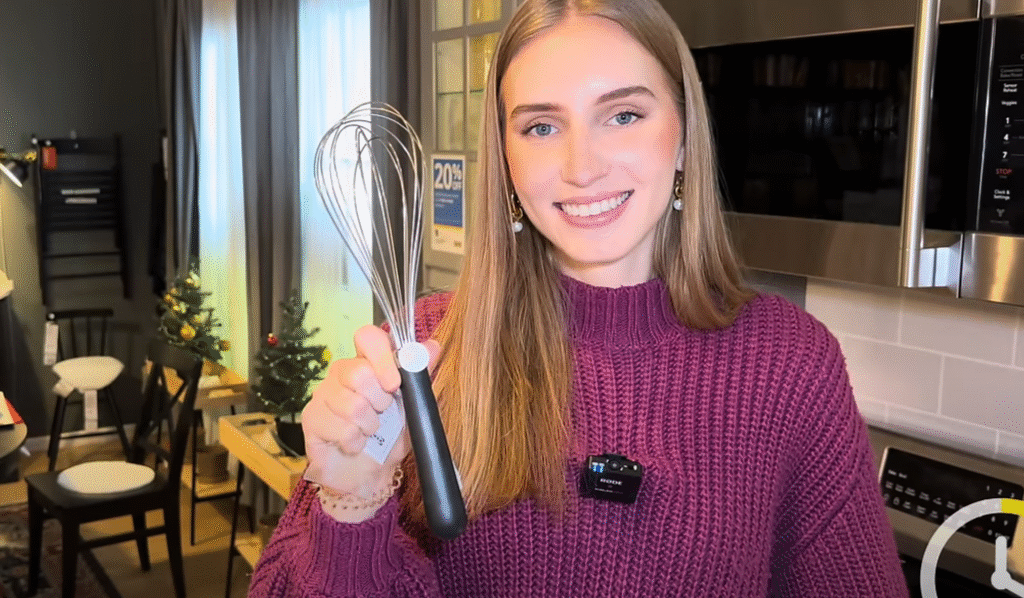Whether you’re learning English as a second language, moving into your first home, or just trying to follow a recipe online, knowing the right kitchen vocabulary can make a big difference. The kitchen is one of the most commonly used spaces in any home, and it’s filled with tools, appliances, ingredients, and actions that are important to understand—especially if you want to cook, bake, or even clean effectively.
Let’s explore some essential kitchen vocabulary in English, broken down into categories: utensils, appliances, cookware, ingredients, verbs (actions), and common expressions.

1. Kitchen Utensils
These are the handheld tools you use when preparing or eating food:
- Spoon – A rounded utensil used for eating or stirring.
- Example: I used a spoon to stir the soup.
- Fork – A utensil with prongs used to pick up food.
- Knife – A sharp tool used to cut food.
- Ladle – A large, deep spoon used for serving soup or stew.
- Tongs – Tools used to grip and lift food, like salad or grilled meat.
- Whisk – A tool used for beating or whipping ingredients like eggs or cream.
- Peeler – Used to remove the outer skin from vegetables or fruit.
- Grater – Used to shred cheese, vegetables, or other foods into small pieces.
- Can opener – A device used to open canned goods.
- Spatula – A flat utensil used to flip or lift food, such as pancakes.
- Measuring cups and spoons – Used to measure specific quantities of ingredients.
2. Kitchen Appliances
These are machines or electric tools found in the kitchen:
- Stove (or cooker) – The appliance used to cook food using heat. It often includes burners on top and an oven below.
- Oven – Used for baking or roasting food.
- Microwave – Heats food quickly using radiation.
- Refrigerator (or fridge) – Keeps food cold to prevent spoilage.
- Freezer – Keeps food frozen for long-term storage.
- Blender – Used to mix or puree food, like smoothies or sauces.
- Toaster – Used to brown slices of bread.
- Kettle – Used to boil water, especially for tea or coffee.
- Dishwasher – A machine that washes dishes automatically.
- Coffee maker – Used to brew coffee.

3. Cookware and Bakeware
These are pots, pans, and containers used for cooking:
- Pot – A deep round container used for boiling or simmering liquids.
- Pan (frying pan or skillet) – A flat, shallow container used for frying or sautéing food.
- Saucepan – A medium-sized pot with a long handle, good for making sauces.
- Baking tray / sheet – A flat tray used for baking cookies or roasting vegetables.
- Casserole dish – A deep dish used for baking layered dishes like lasagna.
- Mixing bowl – A bowl used to combine ingredients.
- Colander – A bowl with holes used to drain water from pasta or vegetables.
- Rolling pin – A cylinder used to flatten dough.
4. Common Ingredients
Here are some everyday food items you’ll hear in the kitchen:
- Flour – Powder made from ground grains, used in baking.
- Sugar – Sweet crystals used in desserts or drinks.
- Salt – A mineral used to season food.
- Butter – A dairy product used in cooking or as a spread.
- Oil – Used for frying or baking; can be vegetable, olive, coconut, etc.
- Eggs – Used in baking, cooking, or on their own.
- Milk – Commonly used in beverages, baking, and cooking.
- Cheese – A dairy product made from milk.
- Spices – Flavorful ingredients like pepper, cinnamon, or cumin.

5. Cooking Verbs (Actions)
Knowing how to describe cooking actions is essential:
- Boil – To heat a liquid until it bubbles.
- Example: Boil the water before adding pasta.
- Fry – To cook food in oil or fat.
- Bake – To cook food in the oven using dry heat.
- Roast – Similar to baking, but often used for meats and vegetables.
- Grill – To cook food over direct heat or flames.
- Chop – To cut food into small pieces.
- Slice – To cut food into thin, flat pieces.
- Peel – To remove the skin from fruits or vegetables.
- Mix – To combine ingredients together.
- Stir – To move ingredients around with a spoon or spatula.
- Whisk – To beat ingredients to add air or blend them.
- Season – To add spices, salt, or flavorings.
6. Kitchen Cleaning Vocabulary
A clean kitchen is a happy kitchen:
- Wipe – To clean a surface using a cloth or sponge.
- Scrub – To clean something thoroughly using force.
- Rinse – To clean with water.
- Dry – To remove moisture.
- Dish rack – A place to put dishes after washing so they can dry.
- Sponge / Dishcloth – Tools used for washing dishes or surfaces.

7. Phrases and Expressions
These common phrases relate to the kitchen or cooking:
- “Too many cooks in the kitchen.” – Too many people trying to do the same thing, causing confusion.
- “Out of the frying pan and into the fire.” – Going from one bad situation to another worse one.
- “Spill the beans.” – To reveal a secret.
- “Bring something to the table.” – To contribute something valuable.
- “A recipe for disaster.” – A situation likely to go wrong.

8. Practice Makes Perfect
Here’s a short example to tie everything together:
I walked into the kitchen, turned on the kettle, and grabbed a mug for my tea. While the water boiled, I took out the cutting board, knife, and vegetables to start dinner. I chopped the carrots and sliced the onions, placing everything into a pan with a bit of olive oil to fry. Later, I’d boil some pasta in a pot and bake garlic bread in the oven. After dinner, I loaded the dishwasher, wiped down the counter, and left the kitchen clean for the next day.
Final Thoughts
Learning kitchen vocabulary in English is not just about memorizing words—it’s about understanding how everyday tools and actions come together to create something nourishing. Whether you’re reading a recipe, helping a friend cook, or preparing a meal yourself, having a strong vocabulary will make the experience more enjoyable and easier to follow.
So go ahead—grab your apron, tie it tight, and practice using these words the next time you’re in the kitchen. Bon appétit!



